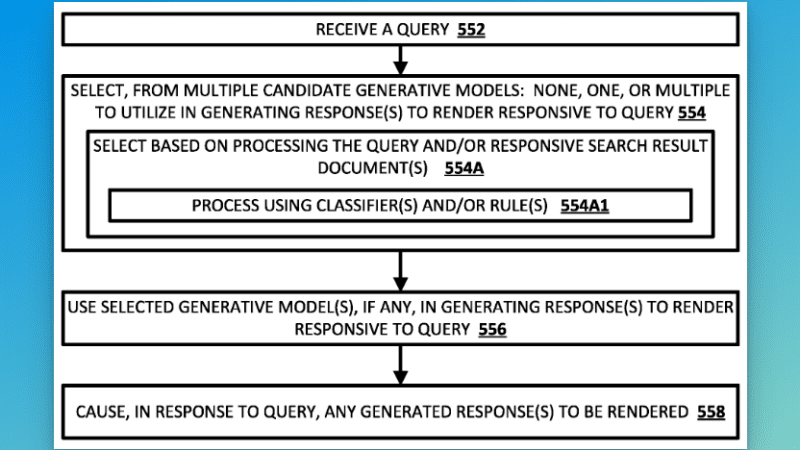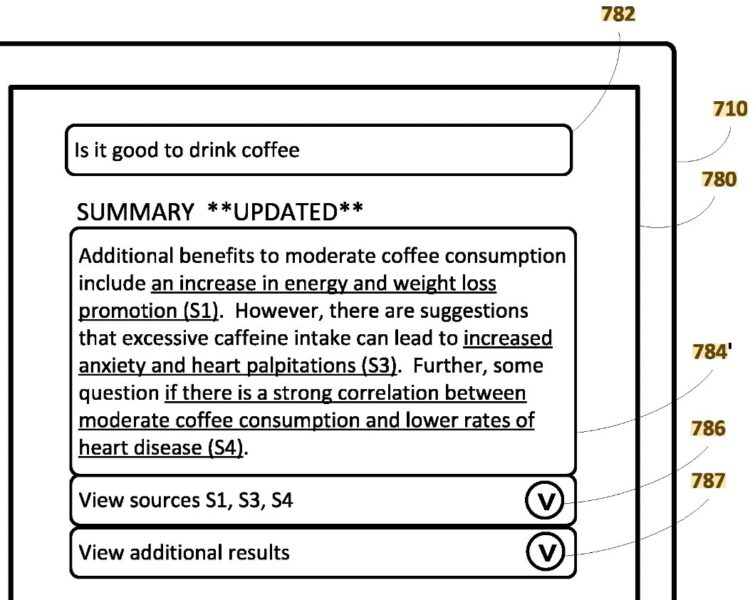Google has been granted a patent that sheds light on how their new Search Generative Experience (SGE) works. The patent, titled “Generative summaries for search results,” reveals that Google utilizes a large language model (LLM) to generate natural language summaries in response to user queries. These summaries can incorporate additional content, beyond the query itself, in order to enhance accuracy and specificity. While having a patent does not guarantee that the technology is currently being used, this insight provides a valuable glimpse into the inner workings of SGE. Read on to discover more about this groundbreaking development.
Abstract
The recent patent granted to Google titled “Generative summaries for search results” provides insights into the functioning of Google’s new Search Generative Experience. This article aims to provide a comprehensive overview of the patent and its implications. By selectively utilizing a large language model (LLM), the patent describes the generation of natural language (NL) based summaries in response to user queries. Additionally, the patent details the processing of additional content using the LLM to mitigate inaccuracies and ensure optimal summary generation.
Dig Deeper
In order to gain a deeper understanding of the patent, it is helpful to refer to a detailed analysis by Juan González Villa. Villa affirms that the patent aligns with what we currently know about the Search Generative Experience. According to him, the patent outlines the process of selectively using a large language model to generate natural language summaries in response to user queries.
Diagrams
Included in the patent are several diagrams that provide visual representations of the concepts described. These diagrams assist in understanding the various components and processes involved in the Search Generative Experience. Some of the key diagrams from the patent are as follows:



These diagrams visually illustrate the key concepts and processes involved in the Search Generative Experience and provide valuable insights into the inner workings of Google’s algorithm.
Why We Care
Understanding the details of this patent can greatly enhance our comprehension of how the Search Generative Experience works. While it is important to note that the existence of a patent does not guarantee the implementation of the described techniques, studying this patent can provide valuable insights into Google’s search algorithms. It is worth delving into the details of the patent to gain a better understanding of how Google processes and presents information in response to user queries.
Background
The Search Generative Experience is a new approach aimed at enhancing search results by generating natural language summaries. This technique relies on a large language model (LLM) to generate these summaries and ensure accuracy and relevance. By analyzing the query content and additional relevant content, the LLM creates a concise summary that captures the essence of the search results.
The patent explains that the additional content, which goes beyond the query content, can also be processed using the LLM. This processing helps in mitigating any inaccuracies, over-specification, or under-specification that may arise in the generated summaries.
Patent Application
Google applied for the patent, “Generative summaries for search results”, on March 20, 2023, and it was issued on September 26. The full version of the patent can be accessed here. The patent provides a detailed description of the methodology employed by Google to generate natural language summaries using the large language model.
Summary Generation
The core aspect of the patent revolves around the generation of natural language summaries in response to user queries. The patent describes how the large language model (LLM) selectively utilizes various sources of content, including the query content and additional relevant content. By processing this content, the LLM generates concise and accurate summaries that effectively represent the search results.
The inclusion of the additional content in the summary generation process serves to refine the generated summaries. The LLM analyzes and processes this content to mitigate any occurrences of inaccuracies, over-specification, or under-specification. Through this iterative process, the LLM ensures that the generated summaries are precise and relevant, providing users with a comprehensive understanding of the search results.
Utilization of Large Language Model
The patent highlights the significance of utilizing a large language model (LLM) in the search generative experience. The LLM plays a crucial role in processing the query content and additional content to generate natural language summaries. As an advanced language model, the LLM possesses the ability to comprehend and analyze complex information, allowing for the generation of accurate and concise summaries.
The LLM also enables the inclusion of relevant contextual information in the summaries. By considering various sources of content, the LLM ensures that the generated summaries provide a comprehensive overview of the search results and deliver a more enriching search experience for the users.
Additional Content Processing
Apart from the query content, the patent emphasizes the processing of additional content using the large language model (LLM). This additional content goes beyond the scope of the original search query and helps refine the generated summaries.
The LLM processes the additional content to address any potential issues with the generated summaries. This processing aids in minimizing inaccuracies and ensuring that the summaries capture the essential information from the search results. By incorporating the additional content, the LLM enhances the overall quality and relevance of the generated summaries.
Analysis by Juan González Villa
Juan González Villa offers a comprehensive analysis of this patent, shedding further light on its significance. Villa’s analysis affirms that the patent closely aligns with the observed functionality of the Search Generative Experience. Through his analysis, Villa emphasizes the relevance of effectively utilizing a large language model to generate natural language summaries that accurately represent search results.
Villa’s insights provide valuable corroborations of the concepts laid out in the patent and enable a better understanding of the potential impact of the Search Generative Experience on Google’s search algorithms.
In conclusion, the patent “Generative summaries for search results” offers valuable insights into the functioning of Google’s Search Generative Experience. The utilization of a large language model, the processing of additional content, and the generation of concise summaries contribute to enhancing the accuracy and relevance of search results. By studying this patent, researchers and professionals can gain deeper insights into the mechanisms behind Google’s search algorithms and further explore the possibilities of natural language processing in search experiences.
Please rate this post

With over 20 years of experience in the car business, I’ve navigated the evolution of the industry from traditional sales to the dynamic digital age. My journey through various roles in both sales and management has endowed me with a unique perspective on the challenges and opportunities in automotive sales today.
As the founder of Shawn Ryder Digital, I combine my extensive background in technology with my deep understanding of the automotive industry. This synergy allows me to craft digital marketing strategies that are not just effective but tailored to the specific needs of each dealership. My commitment is to drive your sales, enhance your brand awareness, and ensure your dealership thrives in the digital landscape.
Here at Shawn Ryder Digital, we’re not just about providing services; we’re about building partnerships. As I often say, “In the fast-paced world of digital marketing, staying ahead isn’t just an option; it’s a necessity.”
Together, let’s embrace the challenges of the digital age and turn them into opportunities for growth and success. Join me in redefining the future of automotive digital marketing. Let’s accelerate your dealership’s journey to the top.
